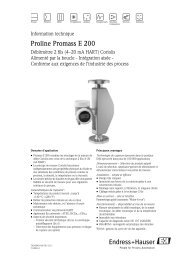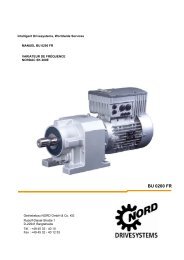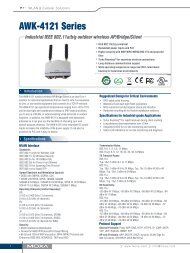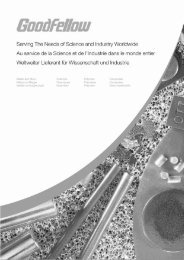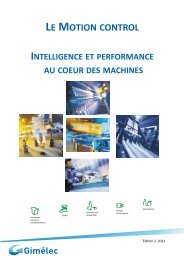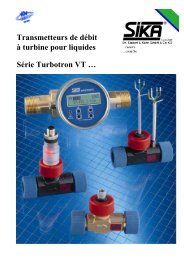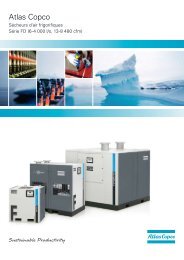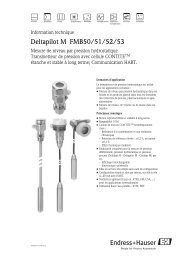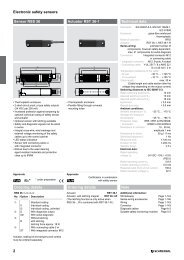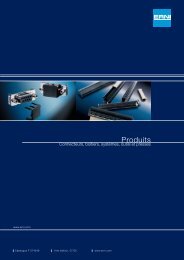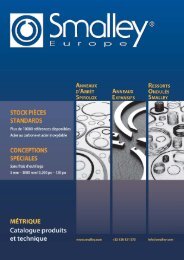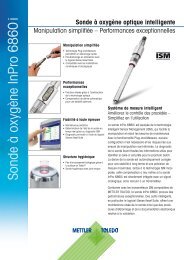Flexible Heaters Design Guide - BiS Sistem
Flexible Heaters Design Guide - BiS Sistem
Flexible Heaters Design Guide - BiS Sistem
Create successful ePaper yourself
Turn your PDF publications into a flip-book with our unique Google optimized e-Paper software.
<strong>Heaters</strong>tat Sensorless DC Controller<br />
<strong>Design</strong> considerations<br />
Minco will be pleased to provide assistance with any of the<br />
design steps below.<br />
Heater: A heater intended for use with a <strong>Heaters</strong>tat must have<br />
a temperature-sensitive element. All Thermal-Clear heaters<br />
meet this requirement, as do heaters with NiFe or NI foil.<br />
Installation: The <strong>Heaters</strong>tat is small enough to mount directly<br />
to printed circuit boards and will withstand both wave soldering<br />
and water wash. Secure it to the board through the mounting<br />
hole. If you intend to adjust the setpoint after installation<br />
you will need a hole in the board opposite the setpoint trimmer.<br />
The leadwire version does not require a circuit board.<br />
System accuracy: The <strong>Heaters</strong>tat, by its design, controls the<br />
temperature of the heater instead of the heat sink. The heater’s<br />
element always runs hotter than the surface to which it is<br />
mounted. For best accuracy under changing ambient conditions,<br />
your design should attempt to either reduce this gradient<br />
or stabilize it to a predictable level. Some suggestions are:<br />
• Use the proper amount of heat. Try to size the heater to run at<br />
least 50% of the time in normal operation and at no more<br />
than 5 W/in² (0.78 W/cm²).<br />
• Maximize contact between the heater and heat sink.<br />
• Stabilize the system. Maintain a fairly constant supply<br />
voltage and insulate the assembly from changes in ambient<br />
temperature.<br />
• Specify standard 1-second scan rate or faster.<br />
• Consider the CT325 miniature DC controller<br />
Setpoint calibration: A <strong>Heaters</strong>tat is factory calibrated to the<br />
nominal resistance of the heater at the setpoint temperature.<br />
Standard heaters, however, have a resistance tolerance of<br />
±10%, or >25°C. For best results we recommend you recalibrate<br />
your <strong>Heaters</strong>tat after installation. Simply adjust the setpoint<br />
until temperature settles at the desired value as verified by a<br />
digital thermometer such as the Minco Tl142.<br />
Where recalibration is impractical you can improve accuracy by<br />
ordering <strong>Heaters</strong>tats and heaters in matched sets. Minco can<br />
compensate for heater tolerance by calibrating the controller to<br />
the actual measured resistance of its mating heater rather than to<br />
the nominal resistance. The heater and controller will be marked<br />
with matching serial numbers. When ordering a <strong>Heaters</strong>tat for a<br />
matched set, specify model CT698 instead of CT198.<br />
Evaluation kits<br />
Test the concept and performance of <strong>Heaters</strong>tats before<br />
investing in a custom design. Each includes a controller<br />
and matching heater. You just supply electric power.<br />
Evaluation kit #4<br />
Contains H15227 Thermal-Clear transparent heater<br />
and CT198-4. Order CT198-K4.<br />
Setpoint: Adjustable from<br />
-40 to 95°C.<br />
Voltage: 4.75 to 10 VDC.<br />
5 VDC nominal.<br />
Watts: 1.7 W at<br />
5 VDC and 50°C.<br />
Heater dimensions: 0.75" × 4" (19 × 102 mm).<br />
Scan rate: 10 seconds; LED indicator.<br />
Evaluation kit #2<br />
Contains HK15228 polyimide Thermofoil heater and<br />
CT198-2. Order CT198-K2.<br />
Setpoint: Adjustable from 0 to 120°C.<br />
Voltage: 7.5 to 38 VDC.<br />
24 VDC nominal.<br />
Watts: 40 W at<br />
24 VDC and 80°C.<br />
Heater dimensions:<br />
2" × 4" (51 × 102 mm).<br />
Scan rate: 1 second; LED indicator.<br />
Miniature <strong>Heaters</strong>tat controllers<br />
Minco can furnish SIP or DIP packages using remote<br />
digital setpoint adjustment.<br />
CT281<br />
CT288<br />
Introduction<br />
<strong>Design</strong><br />
<strong>Guide</strong><br />
Polyimide<br />
<strong>Heaters</strong><br />
Silicone<br />
Rubber<br />
<strong>Heaters</strong> (foil)<br />
Standard<br />
Polyimide<br />
& Rubber<br />
Rubber<br />
<strong>Heaters</strong><br />
(wire-wound)<br />
Mica <strong>Heaters</strong><br />
Thermal-Clear<br />
<strong>Heaters</strong><br />
All-Polyimide<br />
<strong>Heaters</strong><br />
Sensors,<br />
Controllers &<br />
Accessories<br />
Reference<br />
Specifications subject to change<br />
| <strong>Flexible</strong> <strong>Heaters</strong> <strong>Design</strong> <strong>Guide</strong> | www.minco.com<br />
47





